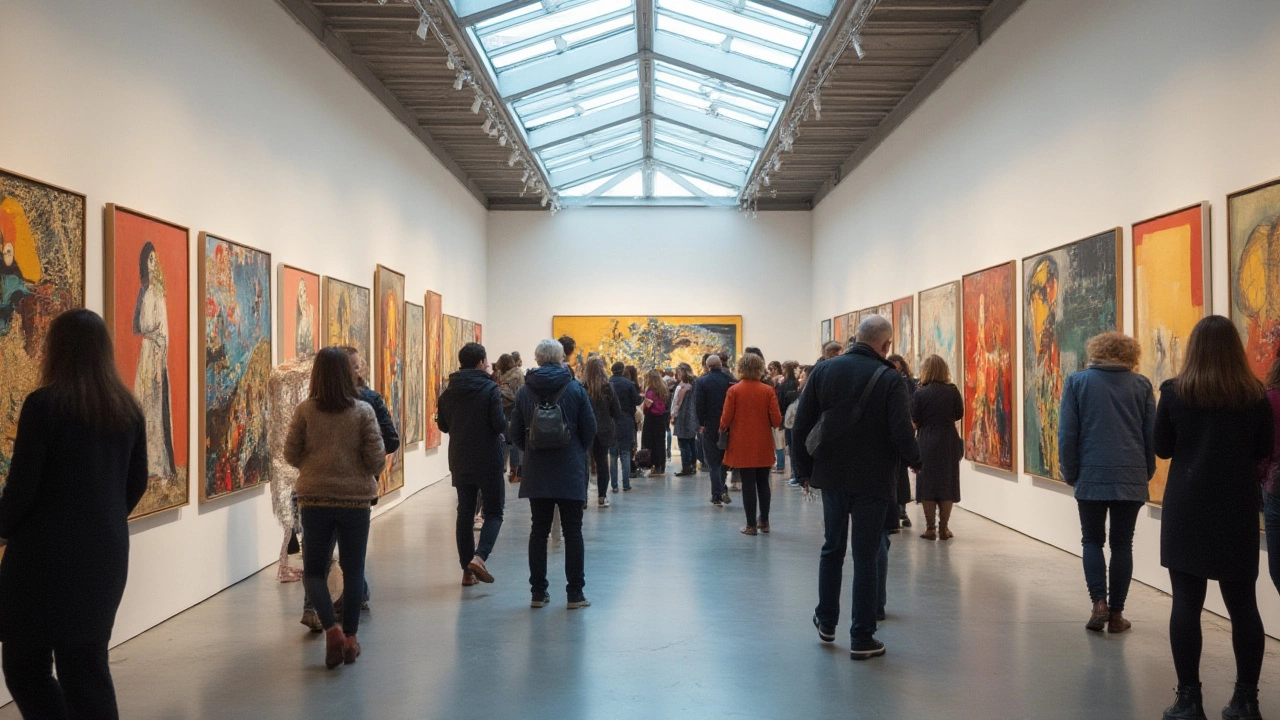Modern vs Contemporary Art: What Sets Them Apart?
If you walk into a gallery and see abstract shapes, bright installations, or a pixelated screen, you might wonder whether you’re looking at modern art or contemporary art. The two terms get tossed around a lot, but they actually refer to different periods, ideas, and even attitudes. Knowing the basics helps you talk about art with confidence and spot the style that fits a piece.
What Makes Modern Art Tick
Modern art covers roughly the period from the 1860s to the early 1970s. It began when artists started to reject the strict rules of classic painting and sculpting. Think of Monet’s hazy water lilies, Picasso’s shattered faces, or Mondrian’s black‑line grids. The main vibe was experimentation: artists tried new ways to see the world, using bold color, fragmented forms, and sometimes raw emotion. They were reacting to big changes like industrialization, world wars, and new scientific ideas.
Key features of modern art include:
- Focus on the artist’s personal vision rather than realistic representation.
- Use of abstraction – taking objects apart and showing them in new ways.
- Movement‑based styles such as Impressionism, Cubism, Futurism, and Abstract Expressionism.
- A sense that art should challenge the viewer’s expectations.
When you see a painting with thick brushstrokes, exaggerated colors, or a shattered perspective, you’re probably looking at modern art.
What Defines Contemporary Art Today
Contemporary art is everything made from the late 20th century to now. It’s not a single style but a broad mix of approaches that reflect today’s culture, technology, and social issues. You’ll find digital installations, street‑art murals, AI‑generated pieces, and works that blur the line between art and activism.
What makes contemporary art unique is its conversation with the world: artists tackle climate change, identity politics, virtual reality, and more. The materials can be anything – recycled plastic, code, sound, even food. Because the art world is global, you’ll hear influences from many cultures at once.
Typical signs of contemporary work include:
- Use of non‑traditional media – video, data, performance.
- Interactive or immersive experiences that invite the viewer to participate.
- Explicit references to current events, social media, or everyday life.
- A focus on concept and message as much as visual appeal.
If a piece makes you think about a news story, uses a smartphone screen, or asks you to walk through a room, it’s likely contemporary.
So how do you tell them apart in a gallery? Look at the dates: modern art ends around the 1970s, while contemporary works are from then onward. Also, check the artist’s intent – modern artists were breaking from tradition, contemporary artists are often commenting on today’s world.
Understanding the difference helps you appreciate why a museum might group a Mondrian with a Picasso, but place a TikTok‑inspired video next to a sculpture made from reclaimed plastic. Both are art, but they belong to different conversations.
Next time you’re in front of an abstract canvas or a glowing screen, ask yourself: is the artist reacting to the industrial age or to the digital age? That quick question usually lands you on the right side of modern vs contemporary.
